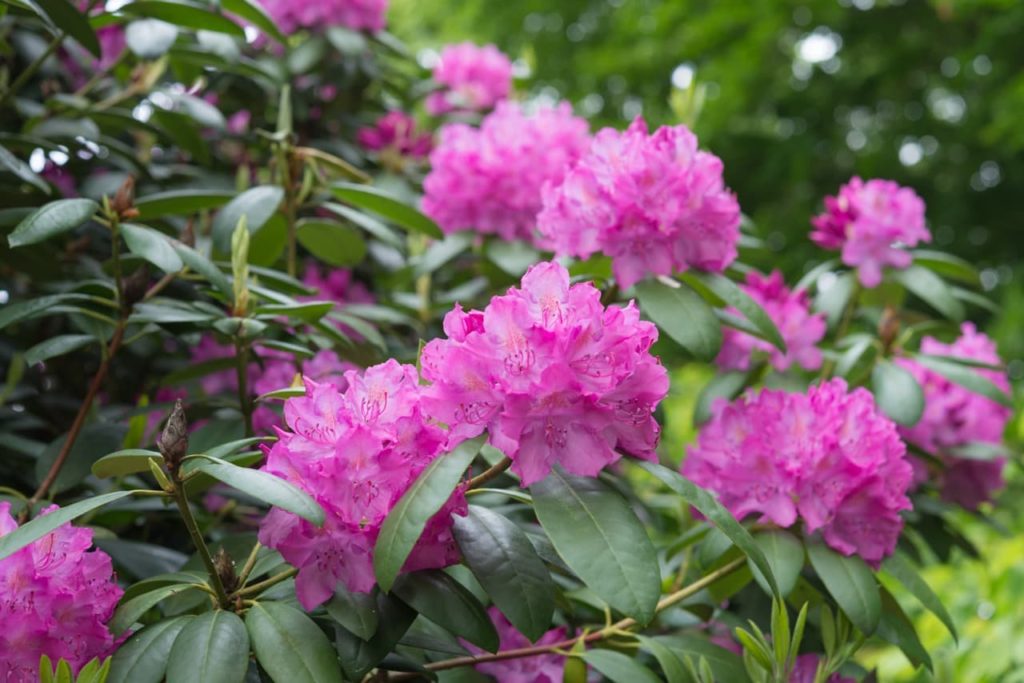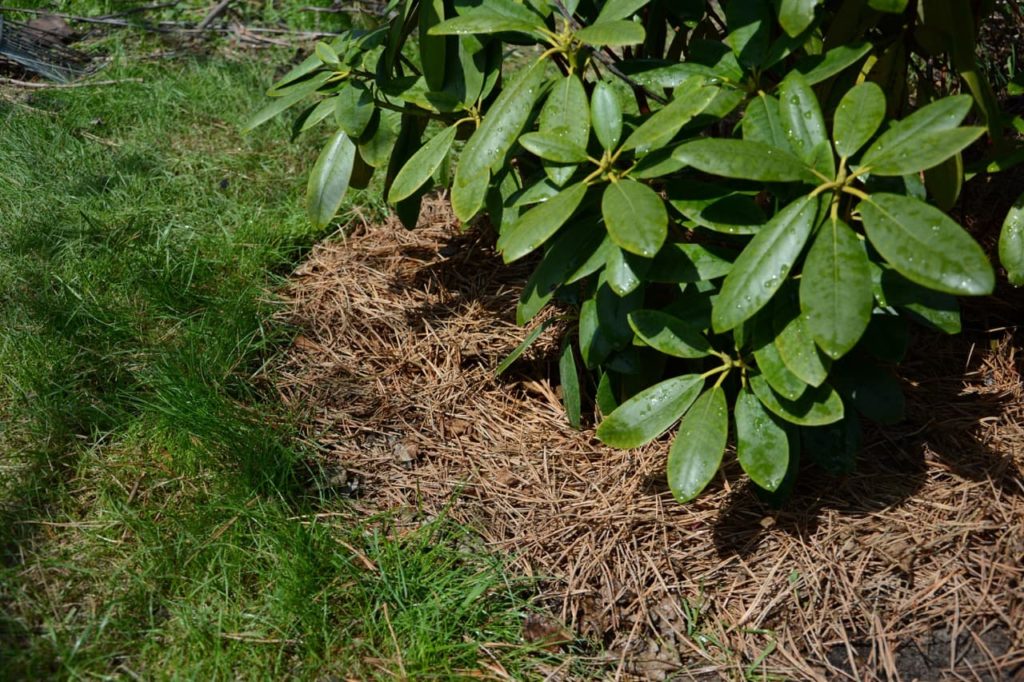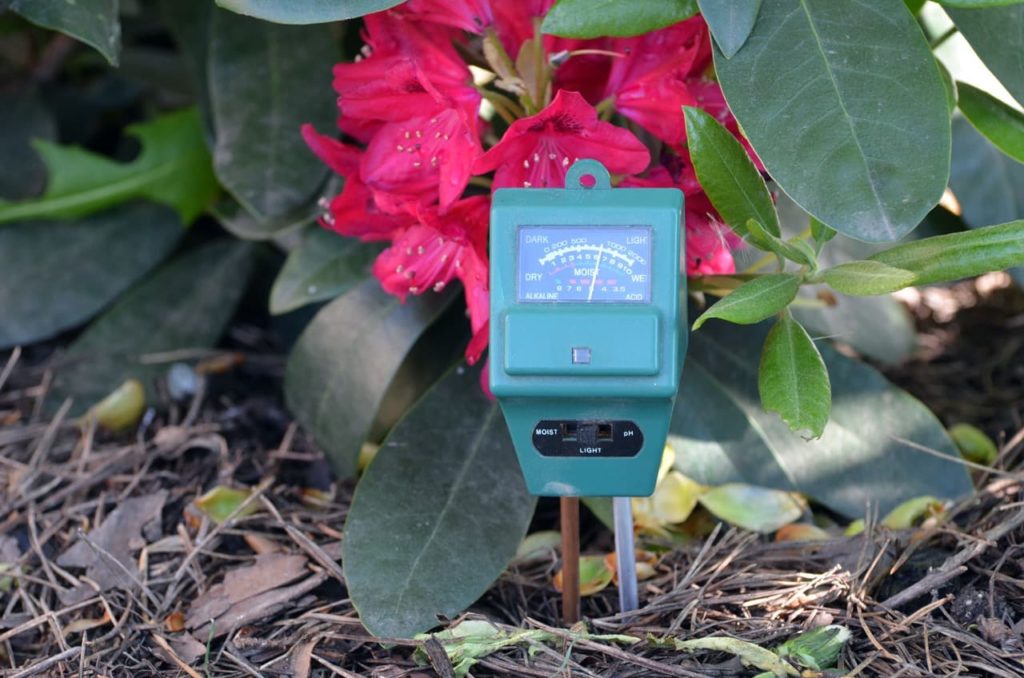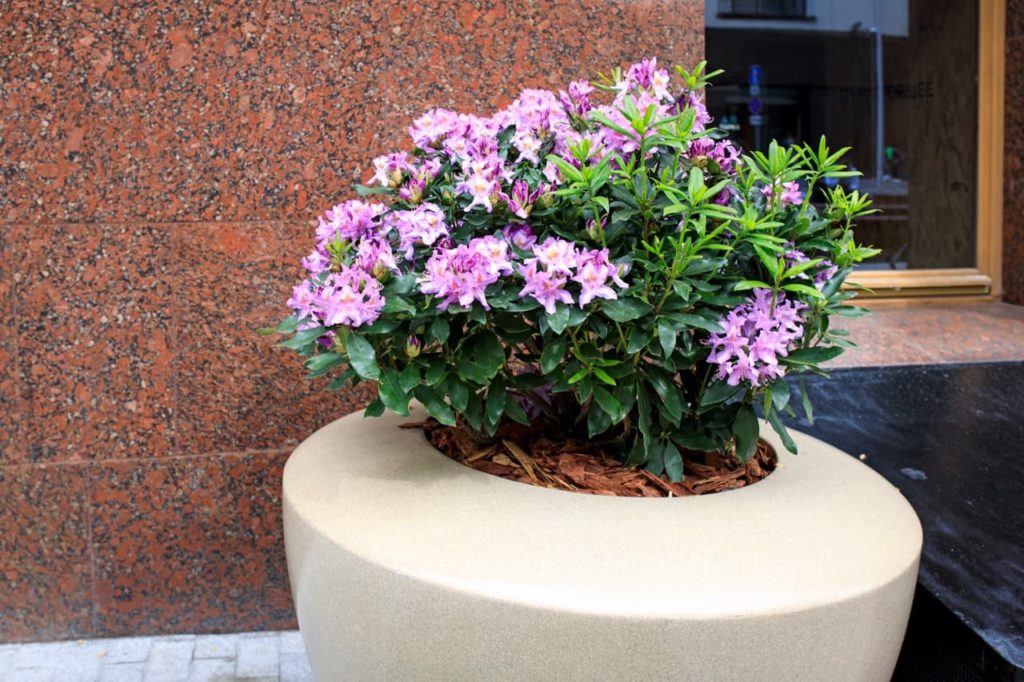Feeding Tips For Rhododendron: ‘Replace The Top 5cm Of Growing Medium Every Winter’

SHRUBS > RHODODENDRON > FEEDING

Elizabeth is a Permaculture Garden Designer, Sustainability Consultant and Professional Writer, working as an advocate for positive change. She graduated from the University of St. Andrews with an MA in English and Philosophy and obtained a Diploma in Applied Permaculture Design from the Permaculture Association.
Reviewed By PETER LICKORISH

Peter is a Horticulture Lecturer and self-employed Horticulturist, with a passion for diverse areas of the industry - from garden design to the science behind plant growth and propagation. He has completed the Royal Horticultural Society’s Master of Horticulture (MHort) Award and lectures on RHS courses at Bedford College.
Contributions From KATRINA CLOW

Katrina Clow is the Hon. Secretary of The Scottish Rhododendron Society. Katrina has over 60 years of gardening experience and has a particular passion for growing rhododendrons in her woodland garden in West Scotland.
IN THIS GUIDE
RHODODENDRON GUIDES
Rhododendrons are popular flowering shrubs that can thrive in higher rainfall areas – particularly those with acidic soil.
They are low-maintenance options if the right growing conditions can be provided and will often require very little care once established.
If you are growing rhododendrons in the ground or in containers where you live, you might be wondering when and how to feed your plants to obtain the best results.

When it comes to feeding rhododendrons, here are the basic things you need to know:
- Growing healthy rhododendrons always begins with the formation and protection of healthy soil, which is the foundation of an organic garden.
- Rhododendrons require a slightly acidic soil or growing medium that is moist but well-drained with plenty of organic matter.
- When growing in the ground, enrich the area with plenty of organic matter before planting and replenish this mulch each spring.
- When growing in a container, choose a good-quality loam-based ericaceous compost and replace the top 5cm of growing medium every winter.
- Feed pot-grown plants in the summer with an organic liquid plant feed.
Read on to learn more about fertilising your rhododendron plants.
| Difficulty | Easy |
| Equipment Required | Mulch, ericaceous compost, liquid fertiliser (optional) |
| When To Feed | Spring |
What Rhododendrons Need To Thrive
The most important thing to understand when it comes to feeding any plant is where and how the plant accesses the nutrients that it needs to survive and thrive.
Rhododendrons, like other plants growing in your garden, take their water and nutrients from the soil or growing medium in which they grow.
It is always vital to remember that healthy plants growing in the ground in a garden depend upon the soil, whilst plants growing in containers depend on the growing medium.
If the soil in your garden is healthy and the plants that you choose are well-suited to the soil conditions, this is the recipe for success, but remember too that their roots can only access nutrients if there is sufficient moisture.
This is just as true when growing rhododendrons as it is when growing a whole range of other plants.

To keep a rhododendron happy and healthy, feeding correctly begins with an understanding of the soil type where you live and the soil conditions that these plants require and desire.
Rhododendrons will fare best in soil that is acidic, with a pH between 5-6.
However, some are more tolerant of neutral or even mildly alkaline conditions.
So, to create optimal growing conditions, you definitely need to know the requirements of the specific rhododendron type and variety that you are growing.
Most rhododendrons will do best in rich, loamy soil with plenty of organic matter and will require moist yet free-draining soil or growing medium.
Feeding Rhododendrons Growing In The Ground
When growing rhododendrons in the ground, the first step should always be to think about how you can build healthy soil.
Remember, rhododendrons need rich and healthy soil to perform at their best.
Before planting out a rhododendron into its growing position in your garden, it is important to make sure that the soil contains plenty of organic matter.
Some sources of organic matter that you might consider include well-composted conifer bark or wood chips, leaf mould, decomposing pine needles or composted bracken.

Rhododendrons have shallow root systems and their roots should be only just below the surface of the soil.
This means that enrichment of the immediate topsoil is most important.
Acidic or neutral organic materials should be layered around the plants to a depth of at least 7.5cm after planting, keeping the main stem clear.
It is from this mulch and the topsoil below that the plants should derive many of the nutrients that they require.
As mulch breaks down slowly over time, the nutrients it contains are dispersed into the soil web, where they can be taken up by plant roots.

This mulch should be replenished each year in the spring to provide slow-release fertility, conserve soil moisture, protect the shallow roots and suppress weed growth, as Katrina Clow from the Scottish Rhododendron Society explains:
“Scrape off the top layer of compost and refresh in spring, making sure to use ericaceous compost.”
Other than ensuring healthy soil and mulching each spring, rhododendrons growing in the ground typically won’t require any additional feeding.
However, if growth or performance seems poor, you might also consider adding an organic fertiliser such as blood, fish and bone in the spring.
“If the leaves turn a yellow colour between the veins, which may remain green, this is usually a clear sign of iron deficiency,” says Peter Lickorish, a Horticultural Consultant.
“The root cause is often the wrong soil pH, so address this if you can by moving or repotting the plant.
“If this is not possible, liquid seaweed with sequestered iron is an example of a fertiliser which can be applied as a foliar feed on a dry, cloudy day by spraying on the leaves at the stated dilution rate.”
As long as the soil is healthy, rhododendrons will not typically require this addition.
Feeding Container-Grown Rhododendrons
If you are growing rhododendrons in containers then they will not be able to uptake the nutrients that they require from the soil.
Instead, they will be reliant on the growing medium with which you have chosen to fill your containers.
When growing rhododendron in containers, it is best to grow in a loam-based, peat-free growing medium.

This can be either one that you purchase or one that you make yourself at home, but whichever option you choose should be slightly acidic.
Make sure that the mix you choose is moist yet free-draining and that it does not become too compacted or waterlogged due to poor drainage.
Even when you have a top-notch growing medium in your container, it is still best to replenish the top 5cm of the potting mix each winter.
Then, every second spring, it is best to repot the rhododendron altogether.

If you trim the roots then you can reuse the same container, but make sure that you use fresh potting mix to make sure that the plants get the nutrients they need.
It is also a good idea when growing rhododendrons in containers to feed your plant through the summer months with a good quality organic liquid plant feed.
Again, remember that this should be a feed suited to ericaceous plants.
Keep the above tips in mind and you should find it easy to make sure rhododendrons get the nutrients they need.
